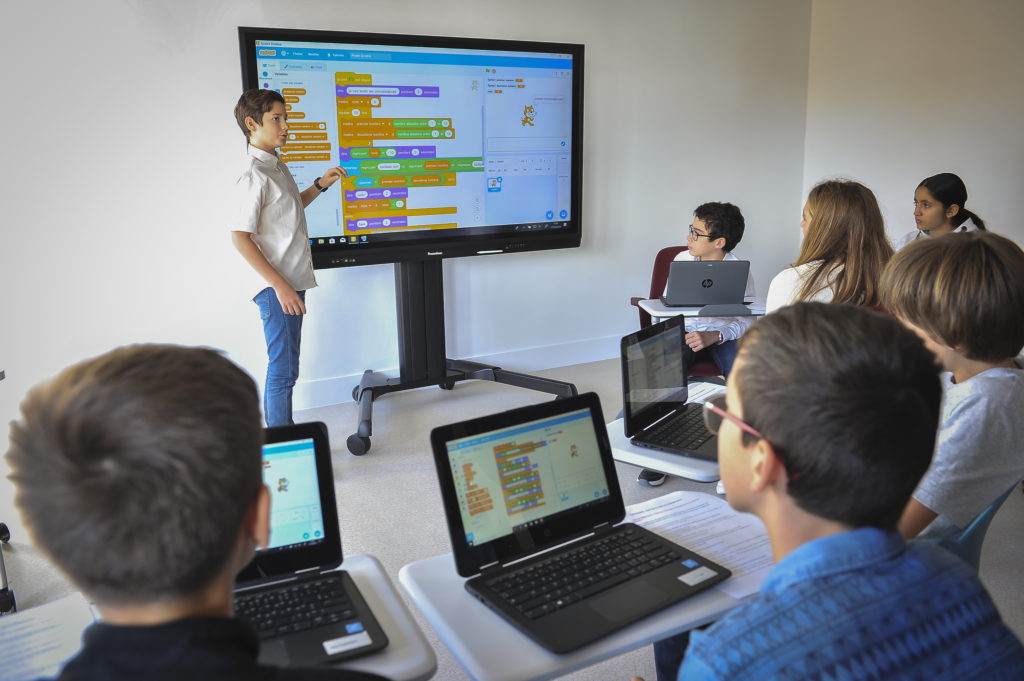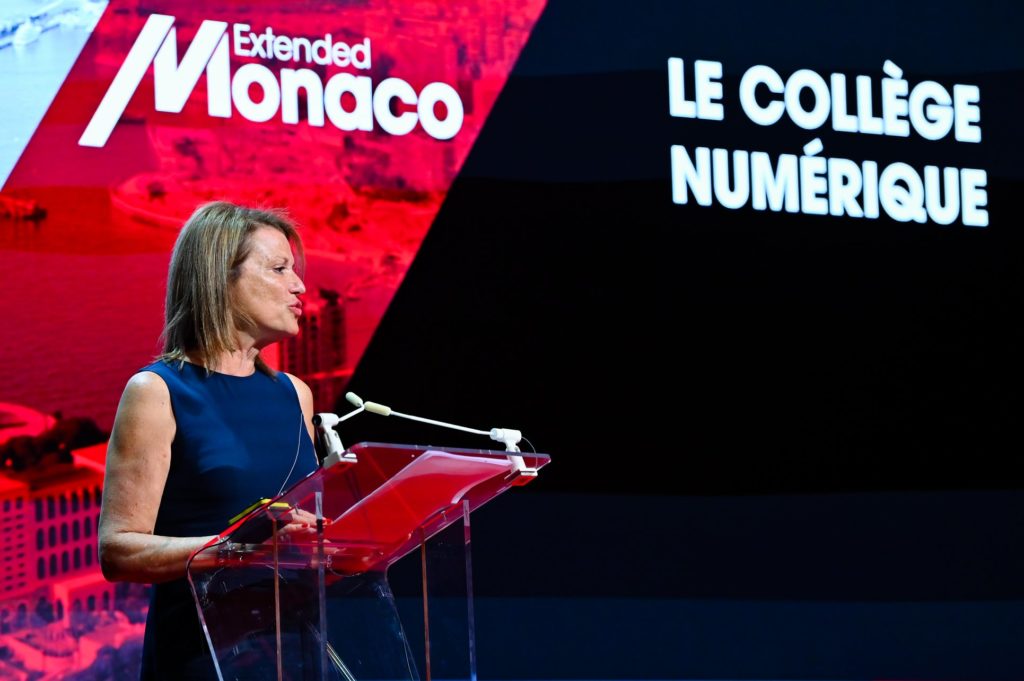“Digital technology has a role to play in education.” For Isabelle Bonnal, Director of Education, Youth and Sport in Monaco, there is no room for doubt: school should not remain a sanctuary, and the digital transition must continue its development within the Monegasque education system. “Digital technology represents a fundamental change with which we must reckon. It is comparable to the development of the printing press. Digital is the 21st century’s Gutenburg,” she stresses.
The philosophy: “A brain well formed is better than one well filled”
At the heart of this analogy is a determination to enhance the role of the educator as well as the teacher/pupil relationship. “Before Gutenberg, books, which were a rare commodity, were learned by heart. The printing press brought an end to this era. Similarly, today, we are going to concentrate on pupils’ understanding and analysis, putting into practice the words of Montaigne: “a brain well formed is better than one well filled”. Digital technology allows us to refocus on the value added by the teacher in guiding pupils. Teachers can offer a personal response, and really tailor it to individual needs,” adds Ms Bonnal’s technical advisor, Nicolas Rodier. For example, using digital tools, teachers can now reduce the amount of time they spend correcting work and focus on more useful tasks, perhaps initiating an hour-long chat over the weekend with their pupils in advance of a test on a Monday…
It is for this reason that, with the launch of Extended Monaco, the Department of Education and the Digital Transition Office naturally worked together on an ambitious approach to the digital transformation of the Monegasque education system. “It is our vision, our firm belief that digital technology is not going to be a substitute for the current physical system, but will improve it,” says Isabelle Bonnal. This improvement will come through better interactions between teachers and pupils before, during and after class (class management, homework, tests, etc.), the personalisation of education (adaptive teaching), the enhancement of teaching resources (interactive maps, software for learning languages, mathematics, etc.), or improved collaboration between teachers (the sharing of exercise/test content, etc.). In 2019, coding lessons were also introduced from nursery level upwards. “Coding is as important as reading, writing or arithmetic,” believes Isabelle Bonnal, who adds “the COVID-19 crisis proved how relevant the use of digital technology is. It was one way, and perhaps the most important way, of enabling social distancing while maintaining exceptional teaching quality.” Introduced very quickly, digital technology made it possible to retain the link between teacher and pupil.
Rocket stage two: digital secondary school
In this digital transformation of schools, the project known as “Digital SecondarySchool” is the second stage of the rocket. “This is about offering a global response. A comprehensive project that will allow us to approach the digital transformation in secondary schools from all angles to ensure that it is effective,” emphasises Nicolas Rodier.
In concrete terms, the Digital Secondary School project involves an ambitious plan to provide equipment to all 500 teachers and 1,200 pupils in the country’s lower secondary schools. They have all been provided with or are now being given computers or tablets with a full software environment that is secure and tailored to the needs of education. This equipment will facilitate remote learning in the event of a new lockdown. “We have put teachers at the centre of this approach: subject by subject, they have identified the leading software tools and are now regularly creating digital content,” explains Nicolas Rodier.
Since it was officially opened by Prince Albert II in 2019, Edulab, the dedicated centre for digital education, has been enabling teachers to work together to develop digital content and to gain access to innovative digital tools (virtual reality headsets, the latest laptops, educational robots, etc.) and the best international expertise. “They can make use of updated teaching resources, 3D models of the Eiffel Tower or the Prince’s Palace; a Monegasque language teacher can use Minecraft to create worlds on Monaco. This is developing teachers’ creativity,” says Nicolas Rodier.
Teaching and support are at the heart of the Digital Secondary School initiative: “Digital involves constant change. To provide continuing education, there will be kiosks – mini Edulabs – in secondary school, where teachers can access training whenever they want. A digital lead has been appointed for each subject,” the technical advisor adds.

Lighter schoolbags and guaranteed continuity
The comprehensive Digital Secondary School project, set to launch in early November 2020, offers further advantages:
- continuity of education for pupils who are ill and more widely in the event of a further health crisis. Remote education is something we are learning to do. So the Principality’s teachers will be trained to select the right tools, to adapt to the smartphone generation, to devise lesson scenarios, to offer support, to promote independence and to assess pupils. This will help staff to develop their digital skills and literacy and make use of appropriate digital tools (videoconferencing, file sharing and collaborative working,
software like Teams and OneDrive, video and audio production tools, remote assessment tools)
Expansion to primary and upper secondary schools from 2021
Following the launch of the project in lower secondary schools in 2020, the next step will be to expand it to upper secondary schools and then primary/nursery schools, which will go digital in 2021 and 2022 respectively. Transformations are often introduced to schools in line with the beginning of new school years. These expansions will be implemented with the same aim of strengthening the role of teachers and supporting the Principality’s digital transformation. “The future lies in digital transformation, which is essential to create an invaluable alternative. In other words, if we do not make use of the advantages offered by digital technology, it would be like continuing to work by candlelight after electricity was invented,” says Isabelle Bonnal, smiling.
Other stages in the digital transformation
- Since 2015, schools have been equipped with interactive whiteboards or projectors, as part of the digital schools plan. Following the start of the new school year in September 2020, 120 interactive digital screens were installed in state-run primary schools to improve the quality of teaching through an effective, easy-to-use software program;
improved interaction, easy, Wi-Fi-enabled connection to the screen using mobile equipment,
and reduced energy consumption as no lamps are required.
- Numerous procedures are being brought online (school enrolment, payment for school meals, scholarship calculators, authorisations for special absences, etc.). The advantage of this is that they will be accessible 24/7.


